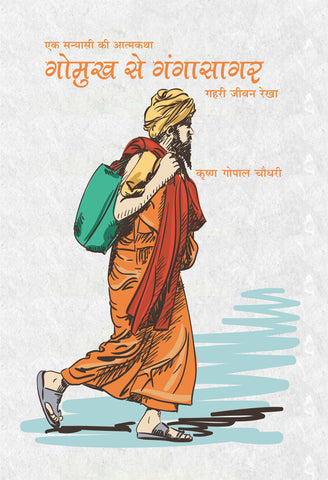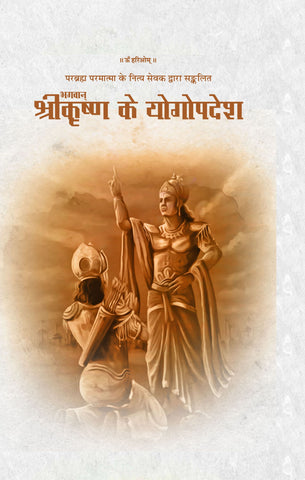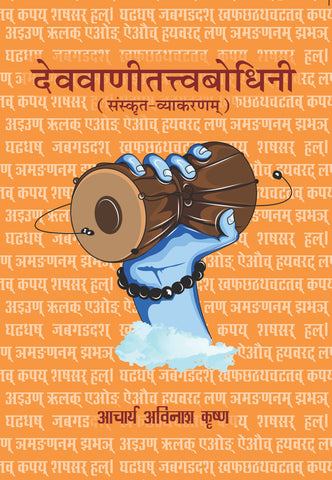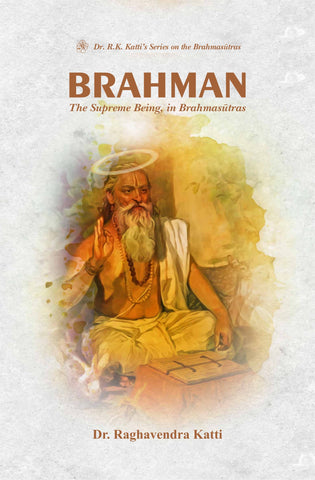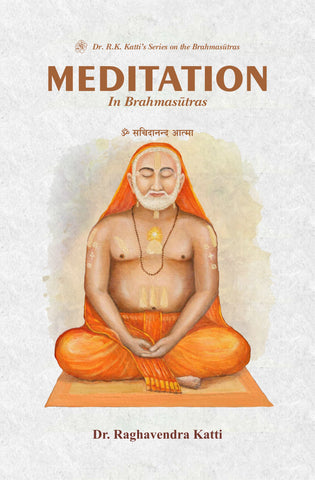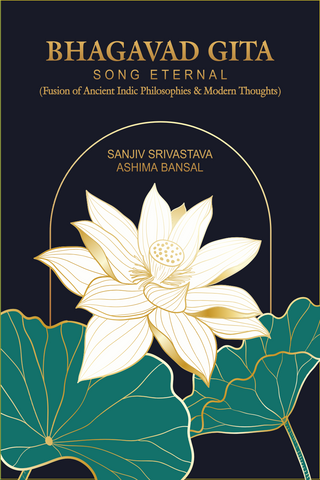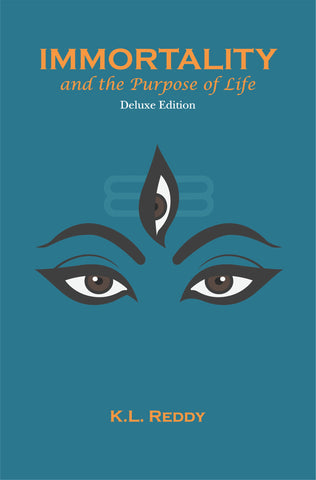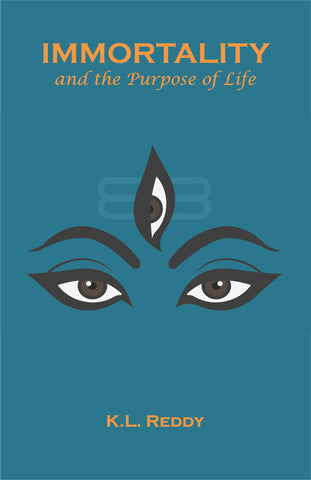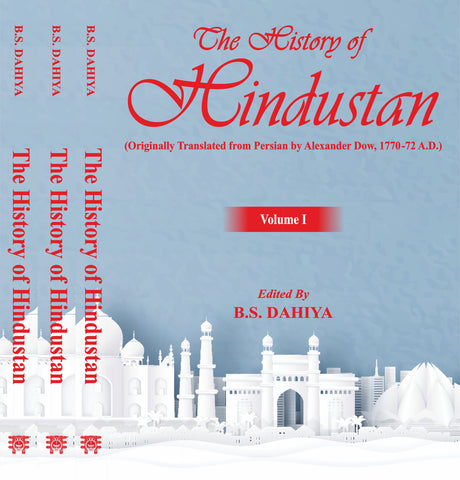Your cart is empty now.
DR. N. USHA DEVI is a learned Vedantic scholar, and teacher of Vedanta, especially Advaita Vedanta of Sri Sankara. Residing in the great land of the birthplace of Sri Sankara, the prolific thinker of Advaita, she had been teaching Advaita Vedanta and related Indian philosophical systems at Sree Sankara College, Kalady affiliated to Mahatma Gandhi University, Kottayam, Kerala from 1986 onwards to 2020. At present, Dr. Usha Devi is engaged in bringing forth a new volume on 'Hindu Dharma- the Supervenience and Emergent Evolution'.
The concept of adhyasa in the philosophy of Sri Sankara has provided a strong ground of explanation for many of the concrete philosophical presuppositions that are difficult to be understood even today. Adopting the general frames of the Vedic teachings and justifying these through the Upanisadic presentations, he resolves the suitability of the Brahmasutras of Badarayana. This is to counter the definitive issues raised against Advaita Vedanta by the opponents. The rhetoric of his teachings has a pristine beauty in that even his followers were sometimes confused over the justifications or had difficulty understanding certain concepts. Getting on to such deep analytical exegetics, the divergence of philosophical conceptions had swept over and two major schools of thought resulted- the Bhamati and the Vivarana. From an analysis of the concepts of these two schools, it can be understood that both school could not be able to determine the right utility of a major concept 'adhyasa' or superimposition adopting one of the three exhibits of adhyasa by Sankara. The fact is that the author of the Ratnaprabha seems to be very close to the original implications of Sankara who accepts 'Atasmin tadbuddhih' as adhyasa.
On this background, the author of the present book 'Adhyasa- An Analytical Exegesis on Sri Sankara' examines the analytical implications of the different concepts of adhyasa. The views of different schools of thought that existed before Sankara and after him are also accounted for.
The main subject- matter discussed in this work includes the implications of avidya, adhyasa and Maya in terms of epistemic and transcendental levels. The author fords impregnate evidence to show that there are distinctions between these three, Maya standing at the transcendental level, avidya and adhyasa at the empirical level. Though Sankara argues that such a differentiation is not easy to distinguish, for, adhyasa on the epistemic level is adhyasa from the logical angle, he admits avidya as the cause and adhyasa as the effect. It is Atmaikatva alone that informs about Adhyasa according to him.
Another argument discussed is about the concept of the 'mere appearance' of Reality. This mere appearance is the distortion of Reality. Further, an analytical discussion is taken up on admitting a three-faced nature of Reality-Brahman as Itself, as the ground of appearance and as appearance as substantive real. The next issue considered is regarding the knowledge of the Vedas. Sankara does not admit the absoluteness of the Vedas as they are revealed ones. These are absolute in the sense of mere appearance only. Finally, there is another important concern for consideration on 'Atma ca Brahma' which is not acceptable to the author also. 'Brahman as Atman' is a mere appearance.
It will be possible for the reader to have an unambiguous understanding of the views of Sri Sankara from this book and thereby direct the Vedanta into its original comprehensive exposition. The readers might thus contemplate this template as the one way of understanding the prudence and sagacity of Advaita Vedanta in its right terms. The views expressed in this book are ever open to genuine correction and shall be gladly acknowledged.
My sincere and earnest thankfulness to M/s Motilal Banarsidass, New Delhi for accepting to publish this work of Adhyasa -An Analytical Exegesis on Sri Sankara. I am also indebted to Kripa Printers Ankamaly, Kerala for helping me to draft and prepare the text in a very symbolic way.
Advaita Vedanta has a very distinctive methodology of comprehension of Reality in that it is not strictly a philosophical discipline. It is a reflective vision of Reality which is justified through the intuitive experience within oneself. The propensity of an individual to the Truth in a state of experience and existence marks the uniqueness of this thinking. The scheme of thought initiated by sage Narayana and carried on by his so-called Guruparampara has provided the ground for even some variants of thought on Advaita such as dualism and the like. The ancient scriptures and the Upanisads which mark the intuitive experiences of the sages form the only foundational comprehensive testimonies or justifications of the nature of Truth-experience. The Advaita thinking solicited answers to the most fundamental questions on Reality such as the 'what' and 'how' - the most difficult conceptualization of Reality.
To review the philosophical concerns of man, available evidence indicates that despite the strong credentials of the ancient Advaita ground there is a clear indication of the metamorphosis of the Advaita Philosophy, in particular, the Advaita Vedanta from the ancient Vedic scheme of thought and the dogmatic Upanisadic spiritual integral visions on Truth. The Vedic discourses on the nature and content of Reality, the relational propositions on the World and the human constitution are not mere facts of primitive immature thoughts but rightly point to the highest 'knowledge'. Though the emphasis on Karma was a distinctive theoretical prejudice, pertaining to the ground of reflecting on the content of Truth, imperatively this points out to a very splendid presentation of the facts that are intuitively experienceable. It is the seers of the Upanisads who realized these Truths in flashes of light that eliminated any misunderstanding of Reality as such through the systematic process of 'Self-Realization'. The Upanisadic seers further reflecting on the necessity of extolling the Reality looked into altering the means of 'Self-Realization' changing the modes of knowing the Reality and thus admitting the relevance of 'knowledge' of the Absolute as the only means to the end.
It is significant that there is a definitive message on the necessity of understanding Reality in its knowable perversion which otherwise is beyond any perceptual premise and thereby validating the grounds for the plausibility of human transcendence through 'Self- Realization' bringing out the oneness or realization of the non-difference among human beings, God and the objective world. As far as the factual understanding of Reality and conceptual analysis is concerned, the Upanisads certainly provide a clear means to the knowledge of Reality which facilitates only a non-distinction from It. But as substantiation on the fact of philosophizing it is the Brahmasutras that bring in the systematisation of the Upanisadic thoughts but in a concise form. However, because of the difficulty in getting acquainted with the sutras misinterpretations rather than subjective ones evolved unfolding the logical inconsistencies of the arguments in these sutras. The intricacy in these sutras was fully unfolded by the great Acarya Sri Sankara who through his intuitive experience and great intellectual skill schematises the ideas of the Brahmasutras in complete conformity with the Upanisads. His endeavour marks a complete metamorphosis of the intricacies of Upanisadic thinking.
Sri Sankara, taking into reflective analysis the presentations of the philosophical validations and justifications of his Advaitic predecessors like Upavarsa, Kasakrtsna, Jaimini, Badarayana, Badari, Gaudapada etc. strives to enrich the Advaita thinking making the entire cognitive enterprise illuminatingly rational at different levels of experience. The interpretative technique and justifications, validations, clarifications and simplifications along with elucidations on potential reciprocation by opponents mark his depth of reflective knowledge and understanding of the nature of Reality. A theistic leaning of the Brahmasutras, which actually is not the case as proved by Sankara, was facilitating, cleared off its subjective prejudices through reflective interpretations and with the aid of logical reasoning, was ineffably bracketed out and the inscrutable revelations of the scriptures were recognised as the sole means to understand the Reality. Finally, it is Non-dualism or the non-distinction between the subject and object that comes to the fore. It is the identification of the individual with the Absolute Self-transcending everything originated that is aimed at the knowledge of Atmaikatva' by Sankara. He emphasized the undeniable testimony of the experience in establishing the Truth positively.
Sagacity in the Brahmasutras of Badarayana
The first schematic elucidation of the Advaita Vedantic thoughts is presented by the sage-philosopher Badarayana. Though some opponents charge that such schematics were done even before Badarayana by thinkers like Asmarathya, Kasakrtsna, Karsnajini, Badari, Audulomi or Jaimini, it can be asserted that the true philosophical compilations based on Upanisads were made by Badarayana alone in sutra form. The shades of difference in interpretations of the Upanisadic thoughts were also prevalent during the period of the orthodox philosophical systems. But such thoughts were more regularly systematized by Badarayana into the sutra literature. Sutras, the short aphorisms meaning clues of the systematic treatises are intended to represent memory aids for long discussions on any topic which a student undergoes with his teacher. But a deep study of the early Vedantasutras shows that these were unintelligible that resulted in multifaceted interpretations.
Though some efforts were made by the early thinkers who never deviated from the Advaitic notion of Reality no works of such efforts are available it can be said that Badarayana's efforts to schematize these Advaitic thoughts deserve significance as they are truly documented. Even in the case of the author of the Brahmasutras, some doubts have been raised about whether this Badarayana is the same as that of the Vyasa of Mahabharata fame or a different person. The presence of expressive thought in some passages in Gita gives rise to this doubt on identity. However, Sankara considers those two as different personalities while Ramanuja and other commentators identify both of them (perhaps to support the bhakti aspect in Gita). There is another view that the work of Jaimini and Badarayana were combined into one which was commented on by Upavarsa that forms the basis of commentary by Sabara, on Purvamimamsa and Sankara on Uttaramimamsa. In Brahmasutra Sankara Bhasya Sankara makes this clear. This combining work may also be attributed to the Vyasa of Mahabharata or it may be the work of Vyasa who acquired traditionally the above Brahmasutras and then compiled them into the present form. There is evidence in Gita to show that it contains references to Brahmasutras. Further, this also reveals that the original Brahmasutras of Badarayana were further systematized by Vyasa including the statements of Gita. The Gita accepts the Samkhya view of creation but modifies it and makes the pradhan subservient to Brahman- the non-dual. In the Brahmasutras also the Sankhyan view is refuted and prakrti is considered as dependent on Brahman'. This view is highlighted by Sankara also.
Delivery and Shipping Policy
- INTERNATIONAL SHIPPING
- Rs.1000-1100/kg
- ESTD. Delivery Time: 2-3 weeks (depending on location)
- Bubble Wrapped with Extra Padding
- NATIONAL SHIPPING
- NCR: Rs. 30/half kg
- Standard: Rs. 80/half kg
- Express shipments also available on Request
- ESTD. Delivery Time: Ranging from 1-4 days up to 7 business days (Depending on your choice of Delivery)
- TRACKING
- All orders; national or international, will be provided with a Tracking ID to check the status of their respective orders
- Depending on the Shipping Service, Tracking ID may be used on their respective tracking portals
Frequently Asked Questions (FAQs)
Domestic Shipping: 3-4 Days (after shipping)
International Shipping: 1-2 weeks (based on your location)
You will receive an email once your order has been shipped or you can email us if you didn't receive tracking details (info@mlbd.co.in)
Every book that we sell is the latest edition except all the rare books
Yes, we do provide free shipping, only on domestic orders (within India) above Rs.1500


